Physical Address
304 North Cardinal St.
Dorchester Center, MA 02124
Physical Address
304 North Cardinal St.
Dorchester Center, MA 02124
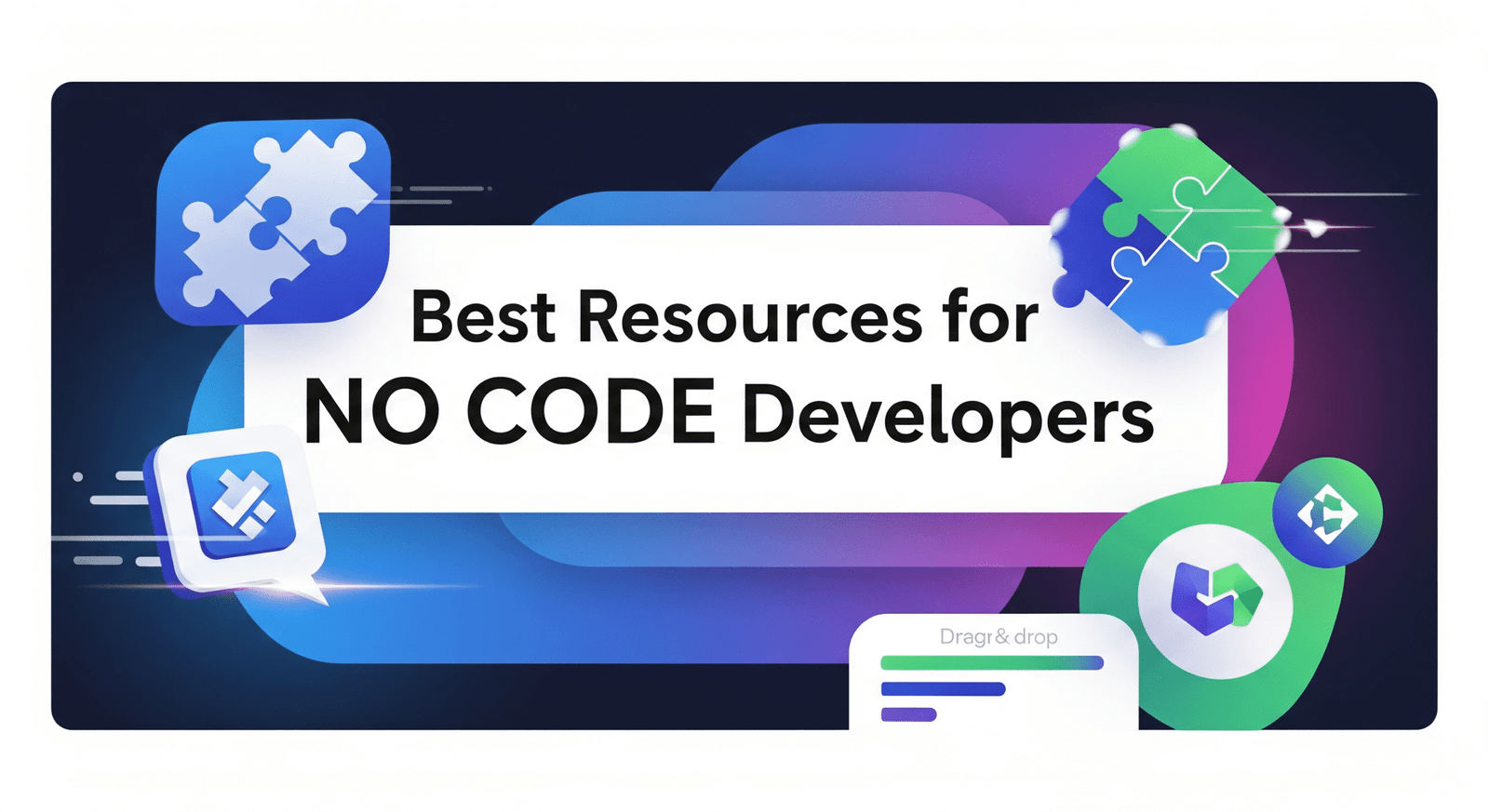
The landscape of software development has fundamentally shifted. In 2025, you no longer need years of programming education or a computer science degree to build powerful, scalable applications. The no-code movement has democratized digital creation, empowering entrepreneurs, marketers, and creative professionals to transform their ideas into functional software with unprecedented speed and accessibility.
This transformation represents more than just a technological trend—it’s a paradigm shift that’s reshaping how we think about building digital products. According to industry forecasts, 70% of new business applications will be built using no-code platforms, with the market projected to reach hundreds of billions of dollars in value.
However, this explosion of possibilities brings its own challenge: navigating the vast ecosystem of no-code tools and platforms. With so many options available, it’s easy to experience analysis paralysis when deciding where to invest your most valuable resources—your time and energy.
This comprehensive guide cuts through the noise. We’ve curated the five most impactful resources for launching your career as a no-code developer, whether you’re aiming to build a SaaS startup, create stunning websites for clients, or automate business processes from the ground up.
No-code development enables you to create software applications using visual interfaces, drag-and-drop components, and pre-built logic blocks instead of writing traditional programming code. These platforms empower users to design, build, and deploy everything from simple websites to complex business applications through intuitive, hands-on processes.
In 2025, no-code has evolved far beyond being a tool for “non-technical” users. It’s become a strategic asset for efficient builders who prioritize speed, agility, and rapid iteration. This shift is powered by the rise of the “citizen developer”—professionals with deep business or domain expertise who can now create their own software solutions without relying on IT departments.
The numbers tell the story: citizen developers are projected to outnumber professional programmers, with up to 75% of new applications built using no-code or low-code technologies. This means your background in business, design, marketing, or operations isn’t a barrier to building software—it’s actually a valuable asset.
While often used interchangeably, these platforms serve different purposes:
No-Code Platforms are designed to completely eliminate programming requirements. They feature entirely visual interfaces, making them accessible to business users, entrepreneurs, marketers, and anyone who wants to build without writing code.
Low-Code Platforms reduce manual coding requirements but still allow professional developers to write custom code for complex features or specialized integrations. They accelerate development teams rather than replace them.
This guide focuses exclusively on true no-code resources, ensuring accessibility regardless of your technical background.
The capabilities of no-code platforms in 2025 extend far beyond simple websites or basic forms. Here’s what’s possible:
Interactive Web Applications: Build fully functional SaaS platforms, social networks, two-sided marketplaces like Airbnb, and sophisticated business dashboards.
Workflow Automation: Connect different software applications (Gmail, Slack, Salesforce) to automate repetitive tasks like lead nurturing, data entry, report generation, and customer onboarding.
Professional Websites and E-commerce: Create high-performance, visually stunning websites, portfolios, and online stores that rival those built by top-tier agencies.
SaaS Prototypes and MVPs: For startup founders, no-code enables building and launching functional minimum viable products in weeks instead of months, allowing rapid market testing and user feedback collection.
Bubble stands as the premier full-stack, no-code platform for building sophisticated, interactive web applications. As a full-stack solution, it handles every critical component: the frontend (user interface), backend logic (workflows), and database (data storage and management). It’s an all-in-one platform for creating custom, data-driven software from scratch.
Best For
Entrepreneurs, startup founders, and aspiring SaaS builders who need completely custom web applications. If you’re envisioning a social network, booking marketplace, project management tool, or complex internal dashboard, Bubble is designed for that level of ambition.
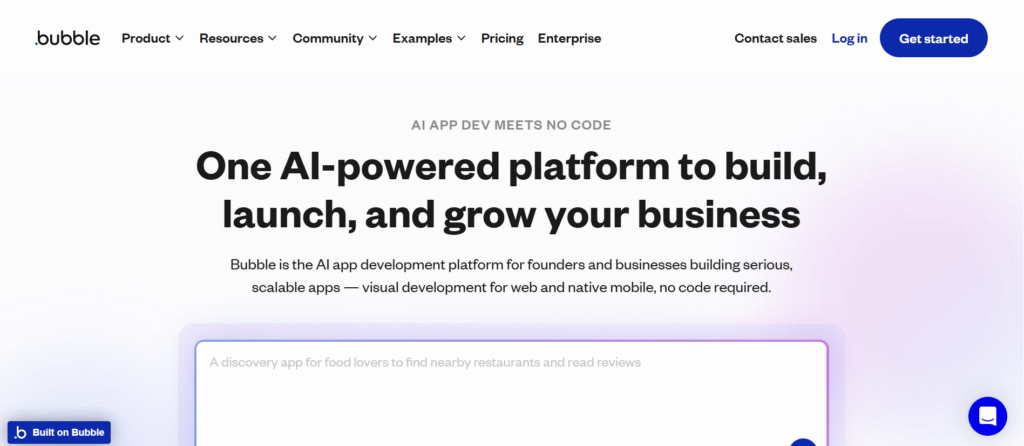
Key Features & Strengths
Pros & Cons
Pros:
Cons:
Why Bubble Stands Out in 2025
Bubble remains the undisputed leader for building custom SaaS products and complex web applications without code. Its maturity, robust feature set, and growing number of successful businesses built on the platform make it essential for serious entrepreneurs. Understanding Bubble’s utility-based pricing model using “Workload Units” is crucial—inefficient workflows can become expensive as traffic grows, making efficient design as important as functional design.
Webflow University isn’t just software tutorials—it’s a world-class educational institution for modern web design and development. This completely free resource masterfully teaches fundamental web development principles (HTML structure, CSS styling, responsive design) through Webflow’s powerful visual platform.
Best For
Visual designers, marketers, freelancers, and creative agencies who want to build beautiful, high-performance, fully custom websites without template limitations. Perfect for anyone wanting to translate design visions into live, professional websites.
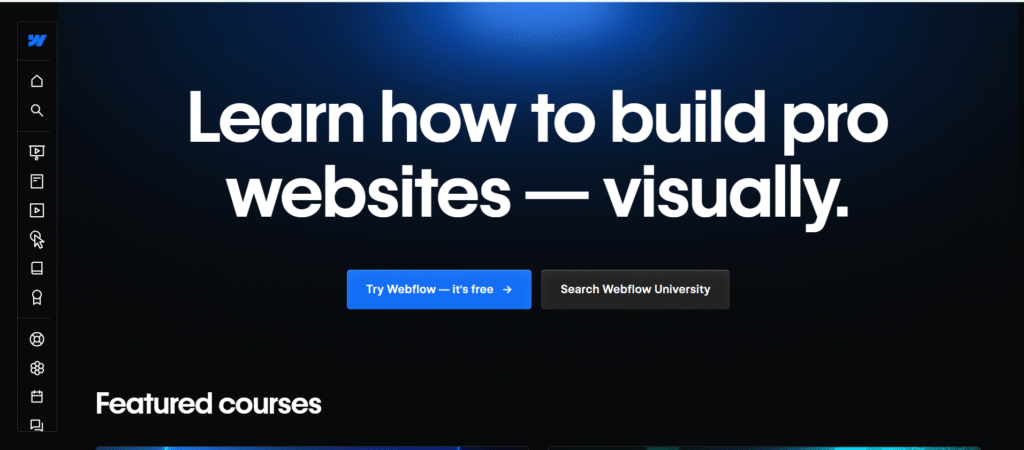
Key Features & Strengths
Pros & Cons
Pros:
Cons:
Why Webflow University Stands Out in 2025
Webflow University has set the industry benchmark for product education, demonstrating the company’s commitment to user success. By investing heavily in high-quality, free education, Webflow has created a loyal, highly skilled user base. This dedication to education signals long-term platform stability and support—critical factors when choosing where to invest your learning time.
In today’s interconnected digital ecosystem, businesses rely on multiple specialized SaaS applications. Zapier serves as the “digital glue” connecting over 6,000 web apps, enabling automatic communication and data sharing. Zapier Learn is the official, free educational resource for mastering workflow automation skills.
Best For
Operations professionals, small business owners, marketers, sales teams, and anyone looking to eliminate manual, repetitive tasks, reduce human error, and improve business efficiency.
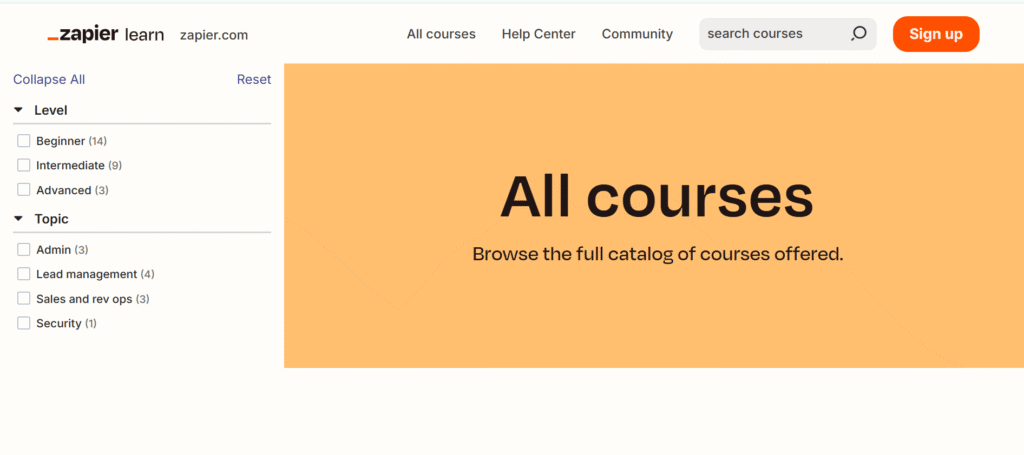
Key Features & Strengths
Pros & Cons
Pros:
Cons:
Why Zapier Learn Stands Out in 2025
In an increasingly fragmented SaaS landscape, integration skills represent a modern superpower. Zapier Learn makes this superpower accessible to everyone, establishing automation literacy as a fundamental professional skill. As you develop these capabilities, platforms like mentorhelp.online can provide additional guidance on packaging these skills into a modern career path.
Airtable transcends being a supercharged spreadsheet—it’s a powerful, user-friendly relational database serving as the flexible backend for countless no-code projects and internal business systems. The best learning resources include official guides, pre-built templates, and an active user community.
Best For
Project managers, operations teams, content creators, and founders need a flexible, collaborative central hub for organizing complex information and building custom internal tools.
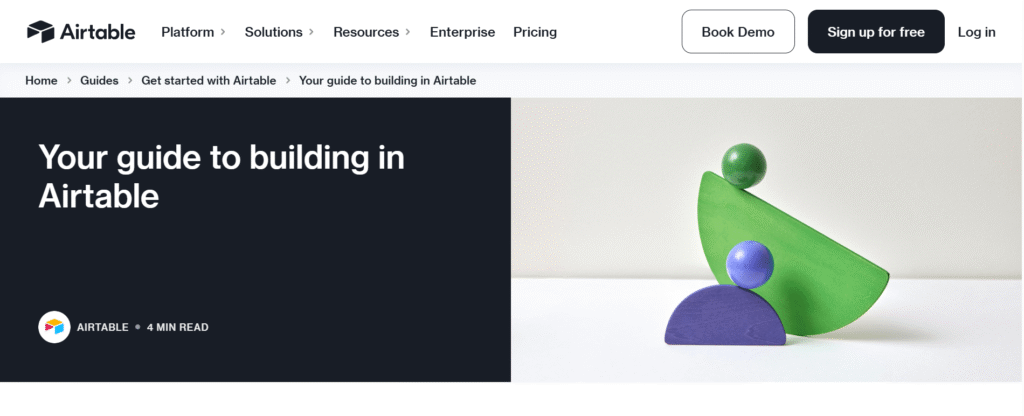
Key Features & Strengths
Pros & Cons
Pros:
Cons:
Why Airtable Stands Out in 2025
Airtable has evolved from a smart spreadsheet into a foundational platform for modern business operations. Learning Airtable means mastering structured data principles and building custom internal systems that power efficient, data-driven companies.
Makerpad (now part of Zapier) is a learning community teaching no-code development through hands-on, project-based methodology. It focuses less on mastering individual tool features and more on cultivating a builder’s mindset—learning to strategically combine different no-code tools to create real products and businesses.
Best For
Aspiring founders, indie hackers, and builders who learn best through practical application. Ideal for those who thrive in community environments and want real-world, entrepreneurial examples of no-code tool integration.
Key Features & Strengths
Pros & Cons
Pros:
Cons:
Why Makerpad Stands Out in 2025
Makerpad fills a critical gap by teaching systems thinking, demonstrating that effective no-code development involves creatively combining specialized tools rather than mastering single platforms. This approach reflects modern software development reality and prepares builders for two career paths: the “specialist” who masters one powerful platform, and the “integrator” who excels at no-code stack creation.
The best starting resource depends entirely on your specific objectives. Begin with the end in mind:
For SaaS startups or complex marketplaces: Start with Bubble for its full-stack capabilities designed for unique, data-driven web applications.
For freelance web design or marketing sites: Begin with Webflow University to master visual design and high-performance website creation.
For business operations and team efficiency: Start with Zapier Learn for the fastest time-to-value in automation.
For organizing complex information and internal tools: Begin with Airtable Guides for flexible, powerful database solutions.
For project-based learning with community support: Start with Makerpad for tangible outcomes and peer collaboration.
| Resource | Best For | Primary Use Case | Learning Curve | Key 2025 Feature |
|---|---|---|---|---|
| Bubble | Entrepreneurs & Startups | Complex Web Apps, SaaS | Steep | AI-Powered App Generation |
| Webflow University | Designers & Marketers | High-End Websites | Moderate | Education as a Product |
| Zapier Learn | Operations & SMBs | Workflow Automation | Gentle | The Integration Layer |
| Airtable Guides | Project Managers & Teams | Internal Tools, Databases | Moderate | No-Code Internal App Building |
| Makerpad | Community Learners | Project-Based Learning | Varies | Building with a “Stack” |
Can I really build scalable apps without code?
Absolutely. No-code platforms like Bubble are built on robust cloud infrastructure designed for scalability. Successful, high-traffic applications have been built and scaled on these platforms. Scalability is often managed automatically, with pricing models accommodating growth through resource scaling.
Do no-code tools require subscriptions?
Yes, most professional-grade no-code tools operate on SaaS subscription models. Most offer generous free tiers perfect for learning and initial building. Public launches with custom domains, removed platform branding, and advanced features require paid plans ranging from around $30 to several hundred dollars monthly—still a fraction of hiring a single developer.
How long does it take to learn no-code?
Learning timelines vary by tool complexity and goals. Basic automation tools like Zapier can be learned in an afternoon. Professional website building in Webflow might take a few weeks of dedicated practice. Achieving proficiency in comprehensive platforms like Bubble can take several months. The key advantage over traditional coding is dramatically shorter time-to-functional-product.
What careers can I pursue with no-code skills?
No-code skills open doors to various modern tech careers without requiring computer science degrees: No-Code Developer, Automation Specialist, Digital Product Manager, UX/UI Designer (who can build designs), Marketing Operations Manager, or tech-enabled Founder. More broadly, no-code enhances existing roles, making you more efficient, autonomous, and valuable to organizations.
The democratization of software creation represents one of 2025’s most significant technological shifts. The barriers between great ideas and functional products have been systematically dismantled. The power to build now rests with creators, problem-solvers, and visionaries—regardless of coding ability.
Your journey from aspiring builder to proficient no-code developer begins with a single step. Choose the resource from this guide that most closely aligns with your primary goal, commit to the learning process, and start creating. As you continue growing your skills, platforms like mentorhelp.online provide ongoing support for building the modern, in-demand capabilities that will define your career.
A computer science degree is no longer a prerequisite for building the future. All that’s required is curiosity, a problem-solving mindset, and the right tools. With these resources, you have a clear path forward. Now, it’s your turn to build.